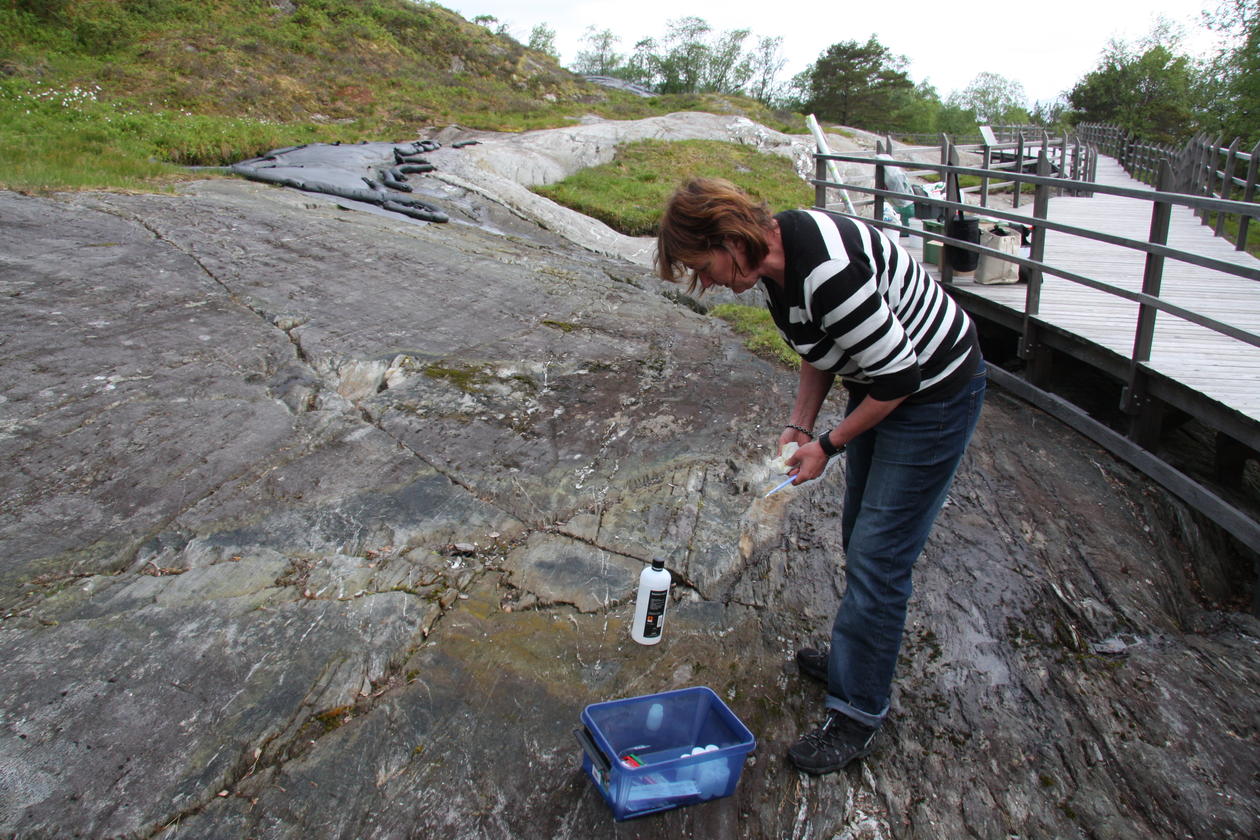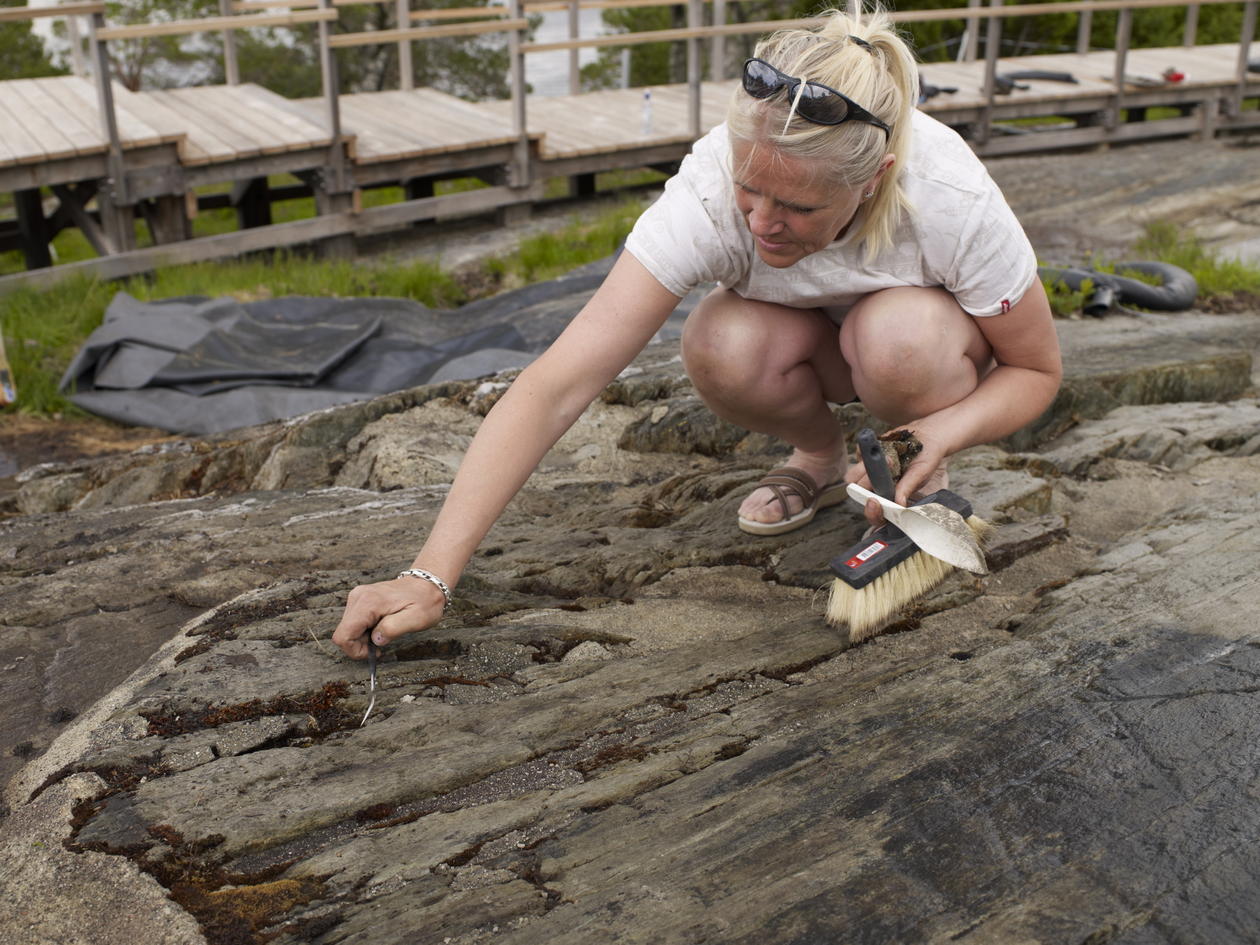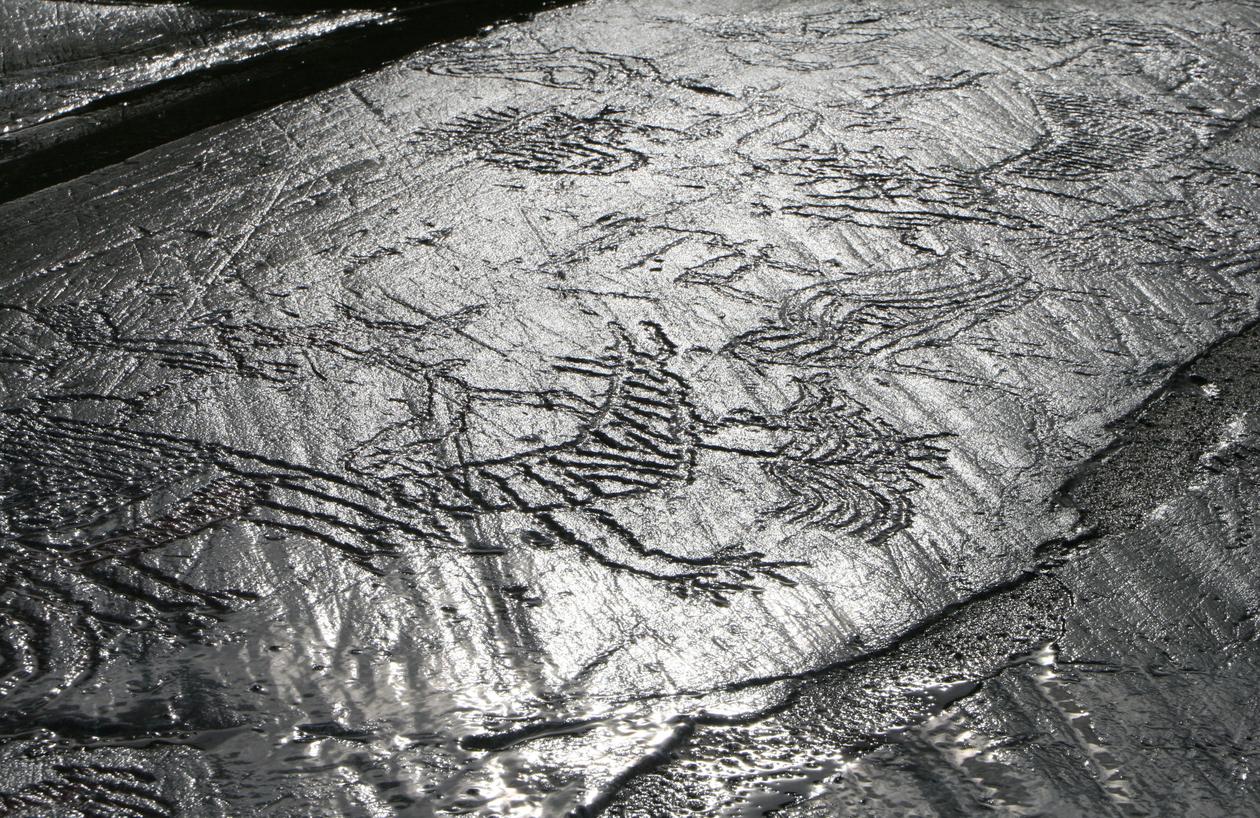High-class masonry – maintenance of the Ausevik rock art site
The Ausevik rock art site in Sunnfjord, the second largest in Western Norway, is located on phyllite, a type of rock which presents challenges as regards disintegration and dissolution.
Hovedinnhold
A frequent and comprehensive maintenance is therefore required to protect the valuable rock art from further damage. The University Museum of Bergen is the executing entity of the conservation work that was carried out this summer, too.
The field work is financed by the Directorate for Cultural Heritage’s national rock art project. This summer, the conservation work was carried out by Wenche Odden, University Museum of Bergen, and Bitten Bakke, Stavanger Museum.
A geological pack of cards
The rock art site in Ausevik consists of phyllite, which has a well-developed foliation. This type of rock splits easily into flakes and this poses a threat to the locality. Continuous maintenance by conservation specialists is therefore required in order to preserve the rock carvings that lie shallower than the exfoliated surfaces.
To stop further disintegration, cracks that have been subject to dissolution have been filled with a new type of cement that is currently being used to plug oil wells, for example in the North Sea.
- This type of work is never done, and in some places the rock is like a pack of cards. The work to fill new cracks has to be carried out continuously. This is why we have to do high- precision masonry, says Wenche Odden
Hunting and magic
At the Ausevik site, which is situated at Høydalsfjorden in Sunnfjord, more than 300 rock carvings have been revealed. The site has a number of carvings from 4000 BC, showing animal and human figures and also geometric shapes, spirals and mazes. The mixture of magical symbols for the hunt and ritual symbols makes the site particularly interesting. A visit to Ausevik may therefore give us an idea of the real and the mythical world of the Stone Age people.
In 2009, the Ausevik rock art site was opened to the public and prepared for visitors with information boards, tracks, platforms, and visitor facilities


